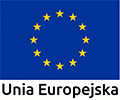On May 19, 2023 a solemn consecration of the tombstone at the cemetery in Prostyń took place. Last year on April 8, the remains of 22 people, Roma of unknown names, murdered by the German gendarmerie in 1942 in Tarnogród (Lubelskie Voivodeship) were buried in this place. There were 22 people: 8 men, 3 women, 3 possibly women, 8 children and 2 unborn children. The remains were found during the renovation and construction works at the market square in Tarnogród from between June 19 and 22, 2020. Bones, body parts and personal belongings were excavated. Among 89 items there were: buttons, shoe fragments, wallets and women’s handbags, jewelry, tableware, mirrors, combs, wooden spools, razors, penknives, colorful beads, gun shells. The place of exhumation and the nature of the excavated items, as well as testimonies of the interviewed witnesses – Kazimierz B. and Marian D., based on heard accounts of already deceased people, confirmed that the remains belonged to the victims of the Roma nationality, murdered by German gendarmes in 1942. The content of the preliminary exhumation report, prepared by the participating archaeologists, also corresponds to the above conclusion. During the examination, experts from the Department of Forensic Medicine of the Medical University of Lublin secured material for possible future genetic tests. The investigation of the Institute of National Remembrance was concluded on November 8, 2021. The identity of the perpetrators could not be determined.
The ceremony of consecration was lead by Fr. Józef Poskrobko. Mieczysław Jodłowski, Pastor of the Pentecostal Church in Nowa Sól, prayed for the victims in Romani and Polish. Stanisław Stankiewicz and Roman Chojnacki spoke to the gathered, it was thanks to them that the remains of the murdered received a proper burial in Prostyń. On behalf of Elżbieta Witek, Speaker of the Sejm of the Republic of Poland, a letter was read out, in which she emphasized: “At the same time, I deeply believe that the truth about the fate of the Roma people, which we are obliged to pass on to future generations, will forever remain an extremely important lesson of tolerance, understanding and respect for every human being.” Tomasz Grodzki, Marshal of the Senate of the Republic of Poland, also addressed the audience. Wreaths were laid at the monument, candles were lit and the Roma anthem was sung. The participants of the ceremony also paid tribute to the Roma and Sinti murdered in the Treblinka II Death Camp and the Treblinka I Penal Labor Camp, laying wreaths and lighting candles at the Execution Site at the Treblinka Museum. On that day, a conference on the Holocaust of the Roma and Sinti was also held. Stanisław Stankiewicz, president of the Central Council of Roma in Poland, presented previously unpublished Romani accounts of the Holocaust. Andrzej Łuczak, director of the Institute of Remembrance and Heritage of the Roma and the Victims of the Holocaust gave a lecture on the commemorating the place of extermination of the Roma in Poland. Ilona Flażyńska, an assistant in the research and publishing department of the Treblinka Museum, discussed the artifacts found with those murdered in Tarnogród. Prof. Zofia Chyra-Rolicz, remarked that it would be important to write a publication referring to the tragic fate of the Roma during World War II. Roman Chojnacki, long-term president of the Polish Roma Association based in Szczecinek was honored with a medal “Meritorious for the Treblinka Museum”. The medal is an expression of gratitude for the commitment and help in the implementation of the statutory objectives of the Museum. He also received thanks from Elżbieta Lanc, Chairwoman of the Museum Council at the Treblinka Museum, for his support and commitment in performing the function of a Member of the Museum Council for the 2019-2023 term. Karolina Stempień, the current president of the Polish Roma Association based in Szczecinek, thanked Mr. Chojnacki for his active work for the Association. She expressed her gratitude to the Director of the Treblinka Museum, Dr. Edward Kopówka for making it possible to hold the conference at the Museum and to the speakers for taking the floor. The main organizer of the event was the Polish Roma Association based in Szczecinek with the support of the Rosa Luxemburg Foundation.





